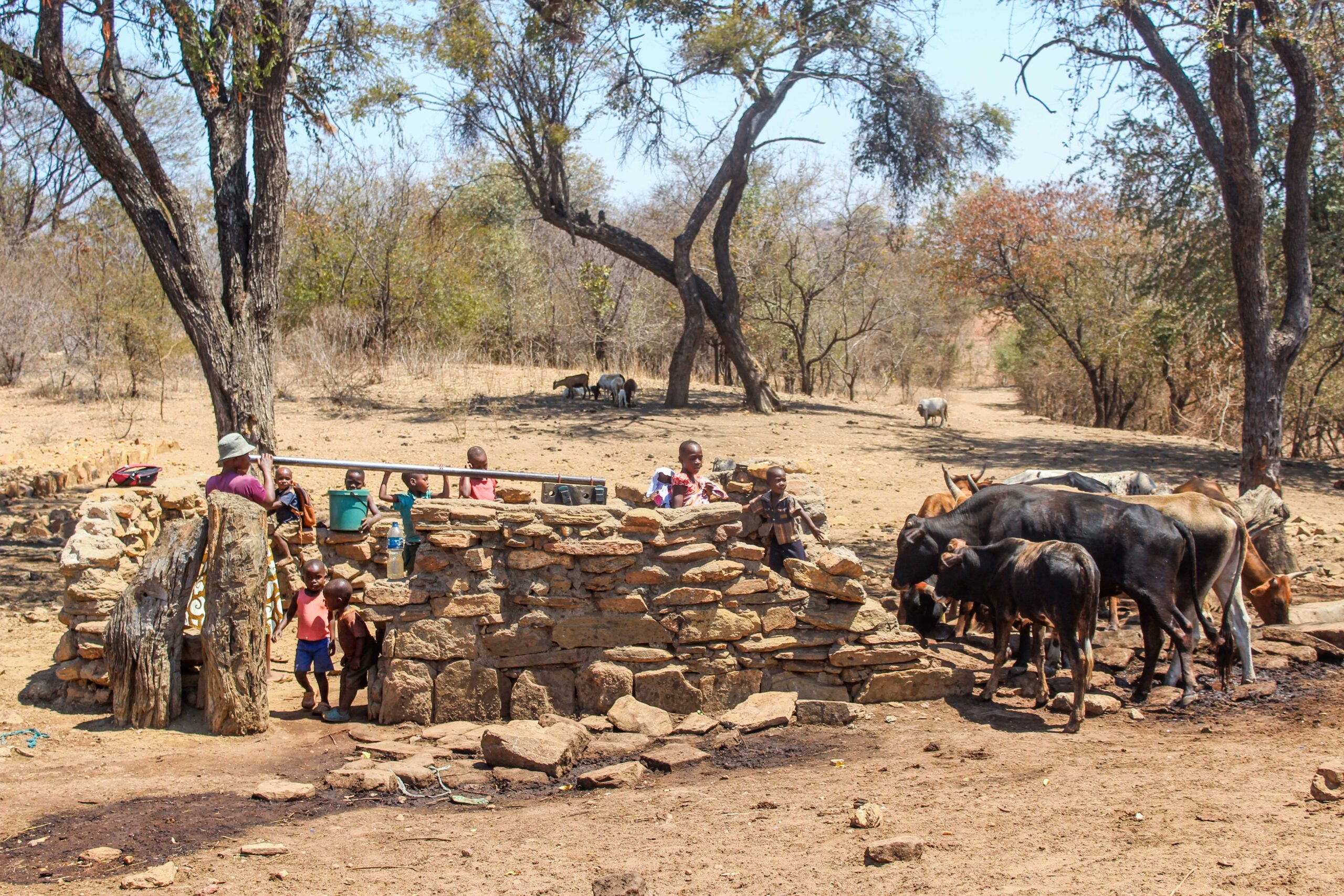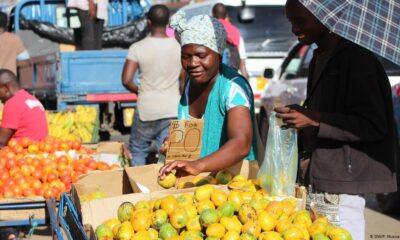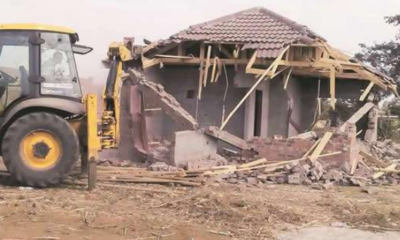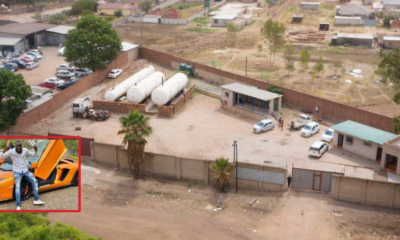NATHAN GUMA
IT is early morning in Kateza Village, Rushinga, Northern Zimbabwe. Women gather at a nearby borehole to fetch water, while cows and goats scramble for the water that flows from the pump into a concrete cistern.
“We can now safely fetch water from this place without fear of losing our lives,” says Tatenda Kawondera, a resident of the village near Zimbabwe’s border with Mozambique.
“We were facing serious challenges as we used to lose livestock to landmines. We constantly feared for our children. It was truly a daily struggle.”
The borehole sits in a hilly area that was once a deadly minefield, littered with dangerous explosives, including anti-personnel mines, like the South African R2M2, Portuguese MAPS or M969 and Italian VS-50.
However, an investigation supported by Media Monitors has shown that communities like Kateza have begun to thrive thanks to increased funding by the United States for its demining works in Northern and Eastern Zimbabwe, specifically through support to the Halo Trust.
Halo Trust, the world’s largest humanitarian landmine clearance organisation, has been active in Zimbabwe’s Mt. Darwin and Rushinga districts since 2013, with funding from the United States government.
In the 2023 financial year alone, Halo Trust and Belgian demining non-profit APOPO cleared 521,074 square metres (129 acres) of land cleared, destroying 14,450 landmines in the process.
During the War of Liberation, which ended in December 1979, leaving 210 km² of minefields stretching along the 700-kilometre with Zambia and Mozambique.
While the exact number of landmines is unknown, estimates range from 200 000 to 2,2 million, many of which remain hidden in Zimbabwe’s rugged, remote areas that are difficult to survey.
Data from the U.S Department of State shows that the country has invested more than US$31 million for humanitarian demining in Zimbabwe since 1998, reclaiming 8,1 km² (2,004 acres) of contaminated land and destroying more than 38 000 landmines.
In 2020, the U.S. government allocated US$3 million for humanitarian demining projects in Zimbabwe, which allowed Halo Trust to return 1,186 million square metres of land to productive use and destroy around 7,800 landmines.
In 2022, the US disbursed US$3,253 million towards demining and US$2,555 million in 2023 for similar efforts.
Village head for Kateza Village in Ward 7, Rushinga Constituency, Rabson Kateza, explains how the demining process has boosted community development in the sparsely-populated village.
"This entire village was a minefield. These have been replaced by villages. Even our borehole is located in a former minefield. The entire area, from Kateza to the Nyamasoto turn-off, was once a minefield. Other people have set up homes there," Kateza told The NewsHawks, as he stressed the transformative impact of demining on the community.
"Since the removal of landmines, we have not had any fatalities or problems with our livestock and children. We were in grave danger before, but now we feel safer than ever."
Another farmer, Edmore Mapira, recounts how he can now carry out farming activity on the land he was once afraid to walk.
"Life was difficult before the landmines were removed. We lost our livestock, from cattle to goats. However, when the demining programme began, Halo Trust helped us remove the landmines. I lost three cattle to landmines along the border," he says.
Mapira says this has also ensured that his children access education.
"So, when Halo Trust removed them, we can now do anything. We can now go anywhere. We always feared for our children. Before the border line was moved, one of our relative's children passed away after a landmine explosion near Ganganyama School," he laments.
"Since the demining process, our children are now walking safely everywhere. Since I came here in 2002, there has not been any safety challenge we are facing right now."
Mapira’s sentiments are echoed by other villagers who recall the once-dangerous journey to places like Chomutukutu, Kasenzi, and Katoni – areas now deemed safe for children to travel to school.
Another villager, Charles Kateza shares his relief. He says the demining process has given him reprieve since he failed to get relocated under the government’s relocation programme.
“People used to die most of the time. Since the demining began, there has not been any report of explosions. Before that people were farming in the minefields,” Kateza told The NewsHawks.
“We expected to get land from the Mindamurefu land programme, as we were settled in minefields, but unfortunately, we did not get any. We are in a mountainous region which does not have any clear farming land. So, the demining programme has helped us to date.”
Impact of Funding
An impact assessment conducted by Halo Trust, in collaboration with Rural Senses, shows how landmine clearance has spurred economic development in Mt. Darwin, the first district declared mine-free.
According to Luiana Antonio, Halo Trust’s regional communications manager for Africa, clearing the minefields opened up land for over 70% of the people surveyed.
"Halo worked with an external consultant, Rural Senses, to conduct an impact assessment in Mt. Darwin, the first district to be declared mine-impact free,” she said in an interview.
“Clearing Mt. Darwin of landmines improved access to land for over 70% of the people surveyed.
"Not only did the number of families owning land increase substantially in the communities surveyed between 2018 (pre-clearance) and 2022 (post-clearance), but the average plot of land owned per family increased as well.
“The number of families owning land increased in five of the six communities surveyed, and the overall number of land-owning households increased by more than 80%, from 720 pre-clearances to 1 309 post-clearances," Antonio said.
Access to Land
Antonio says this has seen the average size of land owned increase among each of the six communities included in the study.
"This newly available land can be used by farmers to grow additional crops or to take the chance to grow cash crops rather than subsistence farming. As a result, the surveyed farmers' average annual income from crops grew almost 40%, from $447 per household in 2018 to $617 per household in 2022," she said.
"This improved agricultural production is essential to achieving food security and eradicating hunger (Sustainable Development Goal 2).”
Employment creation
Besides increasing agricultural productivity and helping achieve food security, the demining operations have created much-needed jobs.
Halo Trust reports that 80% of its workforce in Mashonaland Central and East provinces comes from impoverished communities, with employees gaining valuable skills through training programmes.
"(Around) 80% of Halo's staff is employed from impoverished communities in Mashonaland Central and East Province, where we are clearing. In addition to their salaries, staff is equipped with critical skills through training programs, which they will use to improve future career prospects," Antonio says.
"Land release activities contribute to the psychological, physical, and financial well-being of beneficiaries. Physically, beneficiaries are allowed to safely access areas such as schools, water sources, health facilities, and markets that were previously inaccessible.
“Psychologically, communities are freed from the fear and the anxiety of living near a device that can maim or kill. Economically, through the increase of agricultural land, beneficiaries can practice subsistence and commercial farming. To date, over 20 000 individuals have directly benefited from Halo's work," she added.
Demining progress in Zimbabwe
According to data by James Madison University, which quantified the amount of funding by U.S. Department of State, Zimbabwe is among the top five recipients of humanitarian funding for demining efforts.
The country also still has dense anti-personnel minefields along its border with Mozambique dating back to the Zimbabwe Liberation War from 1964 to 1979, when Rhodesian Security Forces laid millions of landmines along the border with Mozambique.
These minefields have continued to kill and injure civilians and constrain economic development, particularly by killing livestock and preventing agricultural development.
From the 1998 financial year (FY98) to FY23, the United States invested more than US$31 million for conventional weapons destruction in Zimbabwe, which has reclaimed a total of 14.3 million square meters (3 536 acres) of land to productive use and destroyed 76,295 landmines and other explosive hazards.
In the FY23, the U.S. State Department supported demining operations in Mashonaland, Mashonaland East, and Masvingo Provinces, while giving explosive ordnance risk education for at-risk communities.
With funding from the Department of Defence, the Humanitarian Demining Research and Development Programme partnered with The Halo Trust to evaluate three technologies developed by the programme -- a soil-sifting excavator attachment, the dual-sensor HSTAMIDS mine detector, and the GPZ-7000 detector.
Additionally, in partnership with APOPO, their evaluations of the GPZ-7 000 mine detector and the Vallon VMX-10 unexploded ordnance detector continued.
Programme technologies have been used to clear over 35 000 mines from approximately 1.8 million square meters (445 acres) of land since 2014.





















